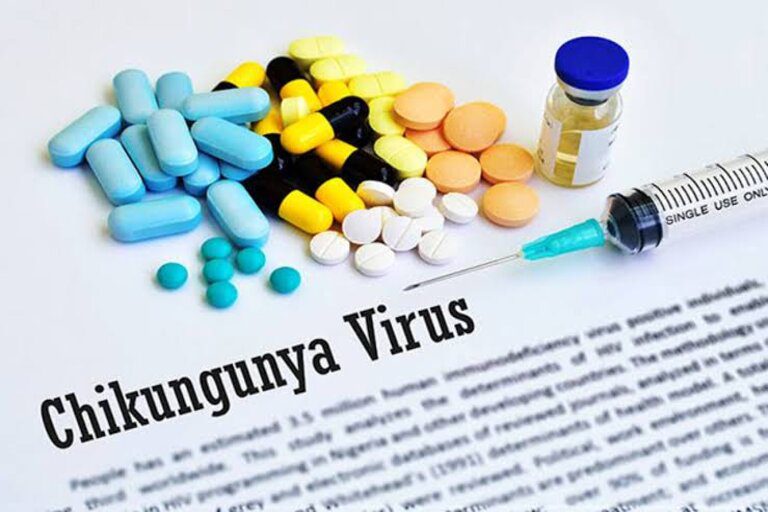
Chikungunya Causes Symptoms And Transmission
Chikungunya is a viral illness transmitted to humans primarily through the bites of infected Aedes mosquitoes, particularly Aedes aegypti and Aedes albopictus.”Chikungunya Causes Symptoms And Transmission” The word “Chikungunya” originates from the Kimakonde language, meaning “to become contorted,” describing the characteristic joint pain that accompanies the disease. This article aims to provide a comprehensive understanding of Chikungunya, including its causes, symptoms, and modes of transmission.
1.Causes of Chikungunya
The Chikungunya virus (CHIKV), which belongs to the Togaviridae family, is the cause of chikungunya. The primary method of viral transmission to humans is mosquito bites. On the other hand, organ transplants, blood transfusions, and delivery are among the uncommon ways that Chikungunya can spread.
2.Symptoms of Chikungunya
The symptoms of Chikungunya typically appear within 3–7 days after being bitten by an infected mosquito. Common symptoms include:
1.Fever Patients often experience a sudden onset of high fever, typically above 102°F (38.9°C).
2.Joint Pain Severe joint pain, particularly in the wrists, ankles, and knees, is a hallmark symptom of Chikungunya. The pain can be debilitating and may last for weeks or even months.
3.Muscle Pain Patients may also experience intense muscle pain, which can accompany the joint pain.
4.Headache Headaches, ranging from mild to severe, are common among Chikungunya patients.
5.Rash Many individuals develop a maculopapular rash, characterized by red spots or bumps on the skin. The rash often appears after the onset of a fever and may affect the trunk and limbs.
Other symptoms may include fatigue, nausea, vomiting, and conjunctivitis. While chikungunya is rarely fatal, the symptoms can be severe and debilitating, affecting the quality of life of those infected.
3.Transmission of Chikungunya
The main way that humans contract chikungunya is through the bite of an infected Aedes mosquito. During the day, especially in the early morning and late afternoon, these mosquitoes are most active. Static water serves as a breeding habitat for Aedes mosquitoes, which procreate in water-containing containers such as flower pots, abandoned tires, and water storage containers.
Apart from mosquito bites, other uncommon ways that Chikungunya might spread include organ transplants, blood transfusions, and mother-to-child transmission during childbirth. But in contrast to mosquito-borne transmission, these forms of transmission are rare.
4.Diagnosis
Chikungunya can only be positively identified by a blood test because symptoms might be difficult to distinguish from other illnesses.
Dengue fever has a greater fatality rate than chikungunya, with up to 50% if left untreated, so it is critical to rule it out as soon as possible Trusted Source.
A person with the aforementioned symptoms should see a doctor right away if they have recently been to a region where either of these diseases is prevalent.
5.Treatment
Although the virus is rarely lethal, it can cause severe and incapacitating symptoms. While the majority of people get over their fever in a week or so, joint pain might last for months. Twenty percent of patients still report having joint pain a year later.
Doctors advise rest and plenty of fluids as the only treatments for chikungunya; there are no specific medications.
Fever and joint pain can be reduced with over-the-counter drugs. Among them are
.Acetaminophen
.Naproxen
.Ibuprofen
Physiotherapy could be beneficial for aches that last longer.
6.Chikungunya Vaccine
Although there is not currently a vaccine or antiviral medication, the illness is usually not life-threatening and has a brief duration. Instead of treating the underlying cause, medication aims to relieve the symptoms. A phase 2 clinical study of a chikungunya vaccine is presently being funded by the National Institute of Health (NIH). Rather than using weakened or inactivated viruses, the vaccine uses what are known as virus-like particles (VLPs).
Vaccines based on virus-like particles (VLPs) have the ability to elicit immunological responses akin to those produced by naturally occurring immunity after viral infection. VLPs, however, are not contagious and are not able to multiply. It is not necessary to create VLP vaccines in a high-level biocontainment setting because entire viruses are not needed to make them.
7.Prevention
Seeing as the major mode of chikungunya transmission is by mosquito bite, the best methods of prevention involve minimizing contact with mosquitoes. Steps that can be taken to prevent chikungunya include:
- Applying insect repellent to skin and clothes that contain picaridin or DEET (N, N-Diethyl-meta-toluamide)
- Wearing clothing that covers the whole body.
- Minimizing time spent outside, particularly in the early morning and late afternoon.
- It can be beneficial to use products that contain PMD (p-Menthane-3,8-diol) or oil of lemon eucalyptus.
- Making use of air conditioning to keep mosquitoes out of rooms.
- Avoid traveling to areas experiencing outbreaks.
- Using vaporizers for insecticides and mosquito coils.
“Chikungunya Causes Symptoms And Transmission” Chikungunya seldom results in death, but the symptoms can be debilitating and persistent. The secret is to stay away from mosquitoes.